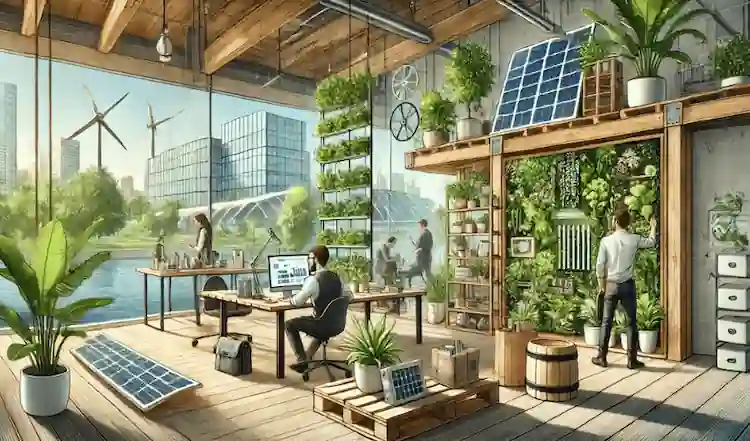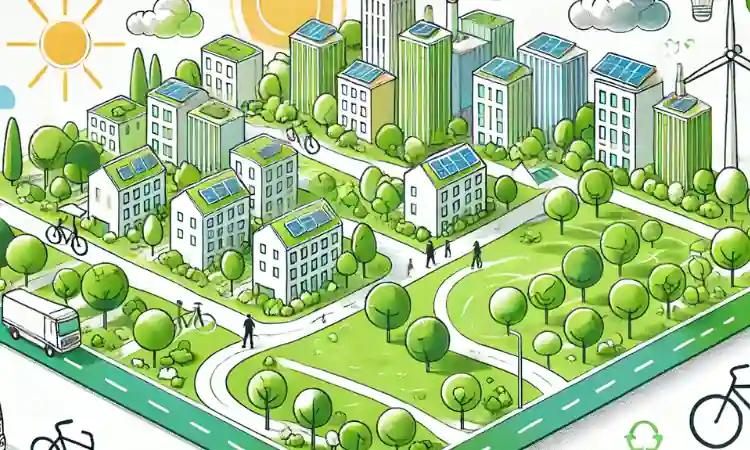What Is Environmental Psychology: A Beginner’s Guide
Have you ever noticed how a walk in the woods makes you feel calmer? Or how noisy, crowded spaces leave you feeling drained?
These everyday experiences are at the heart of Environmental Psychology, a fascinating field that explores how surroundings shape our thoughts, feelings, and behaviour. Successfully creating sustainable, healthy environments hinges upon understanding this powerful connection between people and place.
Here we’ll introduce you to the basics of environmental psychology and why it matters more than ever in today’s changing world.
What Is Environmental Psychology?

Environmental Psychology is the study of interaction between the physical environment with human thoughts, feelings, and behaviours.
In doing so, it bridges psychology, design, urban planning, ecology, sociology, and architecture, asking questions such as:
When posing these questions, it sees environment not just as a setting, but as active force influencing how we live, learn, and connect.
The field developed in the 1960s as researchers began to question the influence of design and space on mental health, productivity, and social behaviour. Today, it’s increasingly relevant as we face urgent global challenges such as climate change, urbanisation, and biodiversity loss.
Key Environmental Psychology Concepts

1. Person–Environment Interaction
What it means:
This principle highlights the dynamic, reciprocal relationship between people and their environments. It’s not a one-way street; environments influence our behaviour and emotions, and we also act upon, modify, and shape our environments.
Real-life example:
Think of a cramped, poorly lit room. It might make you feel tired, irritable, or anxious. In contrast, a bright, open, and well-designed space may boost your mood or productivity. Likewise, when people participate in community gardening or street art, they physically and emotionally reshape their space.
Why it matters:
Designers, educators, and planners need to consider how environments support or hinder human needs, such as comfort, safety, autonomy, and social connection.
2. Place Attachment & Identity
What it means:
Place attachment refers to the emotional bond people form with specific places. Place identity is how these places become part of our self-concept or sense of who we are.
Real-life example:
Your childhood home, a favourite park, or a cultural landmark might evoke strong feelings of belonging, nostalgia, or pride. People who are deeply attached to a place are more likely to care for it and defend it from environmental threats or unwanted development.
Why it matters:
Understanding place attachment can help build stronger communities, support environmental stewardship, and guide decisions about conservation and urban development.
3. Environmental Perception
What it means:
This concept explores how individuals perceive, interpret, and mentally map their surroundings. People’s sense of orientation, spatial awareness, and aesthetic judgments vary based on cultural, personal, and situational factors.
Real-life example:
In a confusing building with poor signage, people may feel frustrated or lost. In contrast, a well-designed public space can feel intuitive and welcoming.
Adding to this, children, the elderly, or those with sensory sensitivities may experience spaces very differently from the average adult.
Why it matters:
Understanding perception helps create accessible, inclusive, and navigable environments for all users.

4. Stress & Restoration
What it means:
Some environments, especially those with noise, pollution, crowding, or visual clutter, can increase stress and mental fatigue. On the other hand, exposure to nature or calm, well-ordered spaces can restore attention and reduce stress.
Relevant theories:
Real-life example:
A 10-minute walk in a green park can improve concentration, mood, and stress levels more than the same walk through a concrete-heavy urban street.
Why it matters:
Designing spaces that reduce sensory overload and offer moments of quiet or nature exposure can significantly improve mental health and performance.
5. Pro-environmental Behaviour
What it means:
Environmental psychology studies include assessing what drives people to adopt sustainable behaviours, such as reducing waste, conserving energy, or supporting biodiversity. This extends to exploring how environmental factors can foster or inhibit cooperative, respectful social behaviour.
Key influences include:
Real-life example:
People are more likely to bring reusable bags if others in their community do the same, or if stores clearly encourage it with signage and incentives.
Why it matters:
To tackle environmental decline, we need to design systems, communities, and policies that encourage sustainable behaviours, both at an individual and collective level.
Key Areas of Use

Urban Design & Architecture: Designing walkable neighbourhoods, accessible green spaces, and inclusive public areas all rely on environmental psychology insights.
Education & Workplaces: Classroom and office design directly affect learning, creativity, and wellbeing. Natural light, layout, and access to nature all matter.
Healthcare Settings: Hospitals and care homes can promote healing and reduce anxiety when thoughtfully designed with sensory and emotional needs in mind.
Sustainability & Climate Action: Changing behaviour is key to tackling environmental challenges. Environmental psychology helps shape more effective campaigns and policies for sustainable living.
Why It Matters In Today’s World

As we face climate change, biodiversity loss, and growing urban populations, designing environments that support both people and the planet is critical.
Environmental psychology offers practical, science-based insights for making our homes, workplaces, schools, and cities more liveable and resilient.
By deepening our understanding of how environments shape us through this discipline, we can create spaces that support wellbeing, and inspire a more sustainable approach to our future.
To support you further, you can also check out the following recommended resources:
What is Sustainability: Fundamentals Explained
How to Build a Sustainable Mindset That Lasts
How to Talk About Sustainability: 6 Practical Tips
Social Sustainability: Benefits & Challenges In Focus
Lastly, for plenty of regular tips and insights, follow along through our social media channels:







